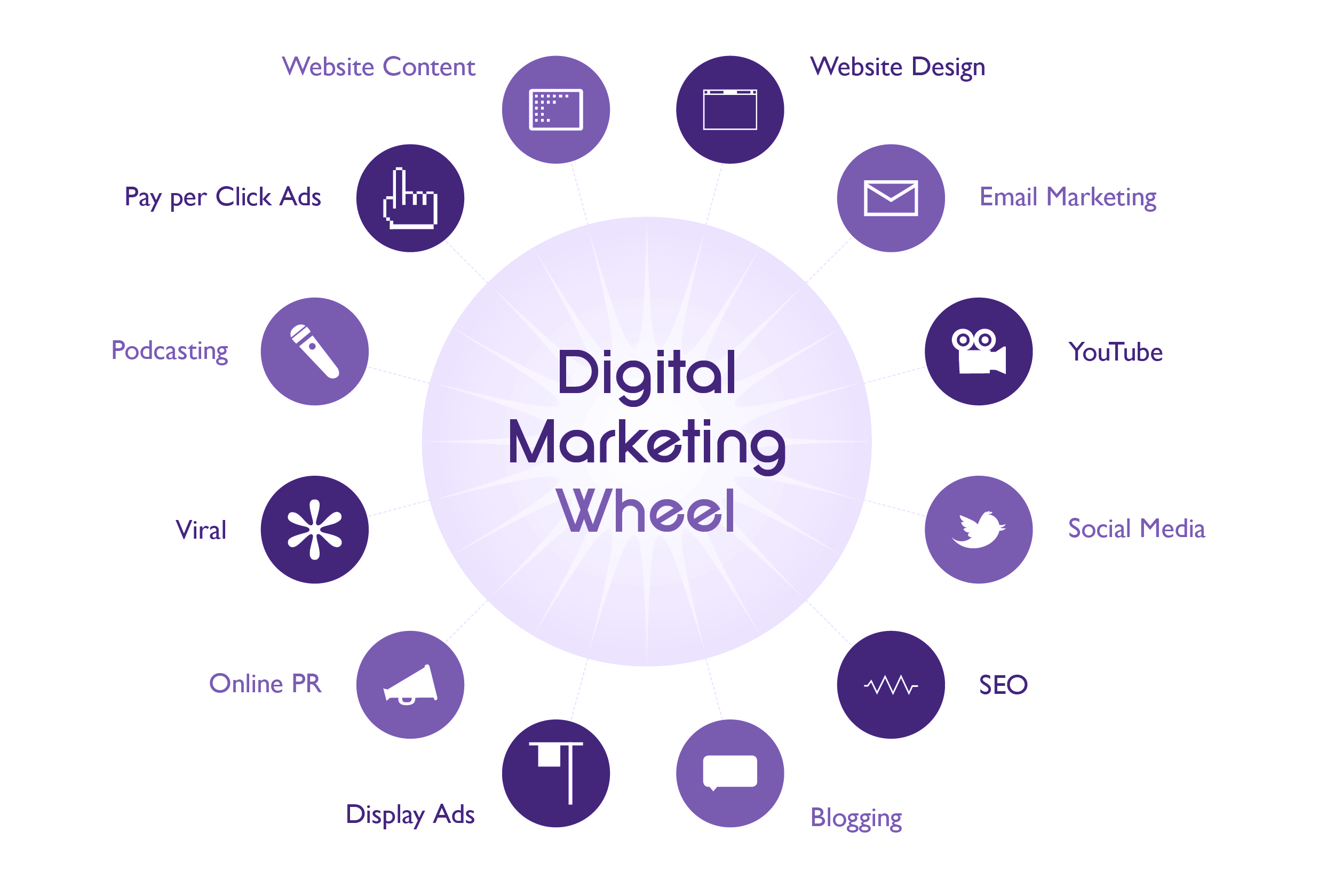Digital Marketing Strategies for IT Companies to Attract Clients

In today’s digital age, it’s more important than ever for IT companies to have a strong online presence. Digital marketing can help IT companies reach their target audience, generate leads, and drive sales. Here are a few key digital marketing strategies that IT companies can use to attract clients:

Develop a Website that is Mobile-Friendly and Easy-to-Use
Your website is your online home, so make sure it’s making a good first impression. Your website should be mobile-friendly and easy to navigate. It should also have clear calls to action that encourage visitors to contact you or learn more about your services.
Create High-Quality Content
Content is king. Creating high-quality content that is relevant to your target audience will help you attract and engage potential customers. Blog posts, articles, whitepapers, and case studies are all great ways to share your expertise and build trust with potential clients.
Use Social Media Marketing
Social media is a powerful tool for reaching your target audience. Use social media to share your content, connect with potential customers, and build relationships.
Use Search Engine Optimization (SEO)
SEO can help your website rank higher in search results, which will make it more visible to potential customers. There are a number of things you can do to improve your SEO, such as using relevant keywords in your content, building backlinks to your website, and optimizing your website for mobile devices.
Target Niche Markets
Instead of trying to be everything to everyone, focus on targeting niche markets. This will help you reach the right audience with your marketing message.
Use Paid Advertising
Paid advertising can be a great way to reach potential customers who are actively searching for your services. There are a number of different paid advertising platforms available, such as Google AdWords and Facebook Ads.
Implement Email Marketing
Email marketing is a great way to stay in touch with potential and current customers. Use email marketing to share your content, promote your services, and nurture leads.
By following these digital marketing strategies, IT companies can attract more clients and grow their businesses.## Digital Marketing Strategies For It Companies To Attract Clients

Executive Summary
IT companies need to implement effective digital marketing strategies to attract and retain clients. By leveraging various channels and implementing targeted campaigns, they can increase their visibility, generate leads, and drive business growth. This article outlines 5 key strategies to help IT companies succeed in the digital landscape.
Introduction
In today’s digital age, it’s essential for IT companies to embrace digital marketing to connect with potential clients and grow their businesses. By implementing a comprehensive strategy that includes website optimization, content marketing, social media engagement, paid advertising, and email marketing, IT companies can effectively attract and retain clients.
5 Key Strategies for IT Companies
1. Website Optimization
- Search engine optimization (SEO): Optimize website content and structure for improved visibility and rankings in search engine results pages.
- Website design and user experience (UX): Ensure that the website is aesthetically pleasing, easy to navigate, and provides a seamless user experience.
- Mobile responsiveness: Make the website mobile-friendly to provide a consistent experience across devices.
- Security and performance: Implement necessary security measures and optimize website performance for faster loading times.
2. Content Marketing
- Create valuable content: Produce high-quality, informative content, such as blog posts, case studies, and whitepapers, that address client pain points and provides valuable insights.
- Use multiple formats: Utilize a variety of content formats, including text, videos, infographics, and presentations to cater to diverse audiences.
- Promote content through channels: Leverage social media, email marketing, and paid advertising to distribute content and reach a wider audience.
- Monitor and track results: Regularly monitor content performance and make adjustments to improve engagement and conversion rates.
3. Social Media Engagement
- Establish a strong presence: Create profiles on relevant social media platforms and maintain an active presence by sharing valuable content and engaging with followers.
- Join industry groups: Participate in industry-specific social media groups to connect with potential clients, build relationships, and establish thought leadership.
- Use targeted advertising: Utilize social media advertising features to reach specific audiences based on demographics, interests, and behaviors.
- Track and measure results: Monitor social media performance metrics such as follower growth, engagement, and website traffic to measure the effectiveness of campaigns.
4. Paid Advertising
- Search engine marketing (SEM): Run paid search campaigns on platforms like Google Ads to target potential clients searching for specific keywords related to their services.
- Display advertising: Use display ads on websites and social media platforms to reach a broader audience and promote brand awareness.
- Retargeting campaigns: Use retargeting to re-engage with website visitors and encourage them to take specific actions.
- Track and optimize campaigns: Monitor paid advertising performance and make adjustments to improve conversion rates and reduce costs.
5. Email Marketing
- Build an email list: Collect email addresses through website forms, social media, and other lead generation channels.
- Segment email lists: Divide the email list into specific segments based on demographics, interests, or behavior to deliver targeted messages.
- Create personalized content: Use personalization techniques, such as dynamic text and automated workflows, to deliver tailored content that resonates with each recipient.
- Monitor and track results: Monitor email campaign metrics such as open rates, click-through rates, and conversions to optimize campaigns and improve deliverability.
Conclusion
By implementing these 5 digital marketing strategies, IT companies can effectively attract and retain clients in the digital landscape. By optimizing their website, producing valuable content, engaging on social media, utilizing paid advertising, and implementing effective email marketing campaigns, IT companies can increase their visibility, generate leads, and drive business growth. It is important to regularly monitor and evaluate the effectiveness of these strategies and make adjustments as needed to ensure continuous success.
Keyword Tags
- Digital Marketing for IT Companies
- Website Optimization
- Content Marketing
- Social Media Marketing
- Paid Advertising
Frequently Asked Questions (FAQs)
- What is the most important digital marketing strategy for IT companies?
- All 5 strategies mentioned in this article are important, but the choice of the most important one depends on the specific target audience, industry, and goals of each IT company. SEO remains crucial for improving website visibility and generating organic traffic, content marketing helps establish thought leadership and provide valuable information to potential clients, social media engagement allows for relationship-building and community creation, paid advertising enables targeted campaigns to reach specific audiences, and email marketing nurtures leads and promotes conversions. By combining these strategies, IT companies can maximize their digital marketing effectiveness.
- How can IT companies create effective content marketing campaigns?
- To create effective content marketing campaigns, IT companies should start by identifying their target audience and understanding their pain points and interests. Develop high-quality content that provides valuable insights, addresses industry challenges, and showcases expertise. Use a variety of content formats to cater to diverse audiences, and distribute content through multiple channels, including the company website, social media platforms, and industry-specific publications. Regular monitoring and evaluation of content performance are essential for refining strategies and optimizing results.
- What are the benefits of social media marketing for IT companies?
- Social media marketing offers several benefits for IT companies. It enables:
- Building relationships and connecting with potential clients
- Establishing thought leadership and showcasing expertise
- Sharing valuable content and industry news
- Driving traffic to the company website
- Generating leads and fostering conversions
By engaging with potential clients on social media, IT companies can build trust, increase brand awareness, and generate business opportunities.
- How can IT companies optimize their paid advertising campaigns?
- To optimize paid advertising campaigns, IT companies should focus on:
- Keyword research: Identify relevant keywords that potential clients search for and use them in ad copy and targeting.
- Audience targeting: Use targeting options to reach specific demographics, interests, and behaviors related to the target audience.
- Ad copy and design: Craft compelling ad copy and design visually appealing ads to capture attention and drive clicks.
- Landing page optimization: Ensure that landing pages are relevant to the ad content, provide a seamless user experience, and encourage desired actions.
- Performance monitoring: Regularly monitor campaign performance metrics, such as click-through rates, conversion rates, and cost per acquisition, and make adjustments to improve ROI.
- What are the key metrics to track in email marketing campaigns?
- Key metrics to track in email marketing campaigns include:
- Open rates: The percentage of recipients who open an email campaign.
- Click-through rates: The percentage of recipients who click on a link within the email.
- Conversion rates: The percentage of recipients who complete a desired action, such as making a purchase or downloading a resource.
- List growth: The rate at which new subscribers are added to the email list.
- Bounce rates: The percentage of emails that are undeliverable due to invalid email addresses or server issues.
- ROI: The return on investment generated by email marketing campaigns.







